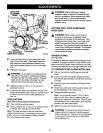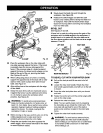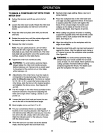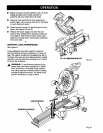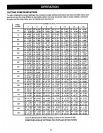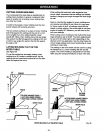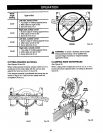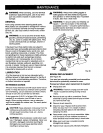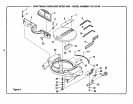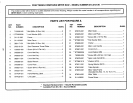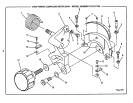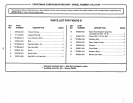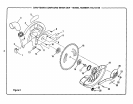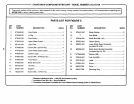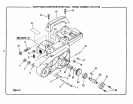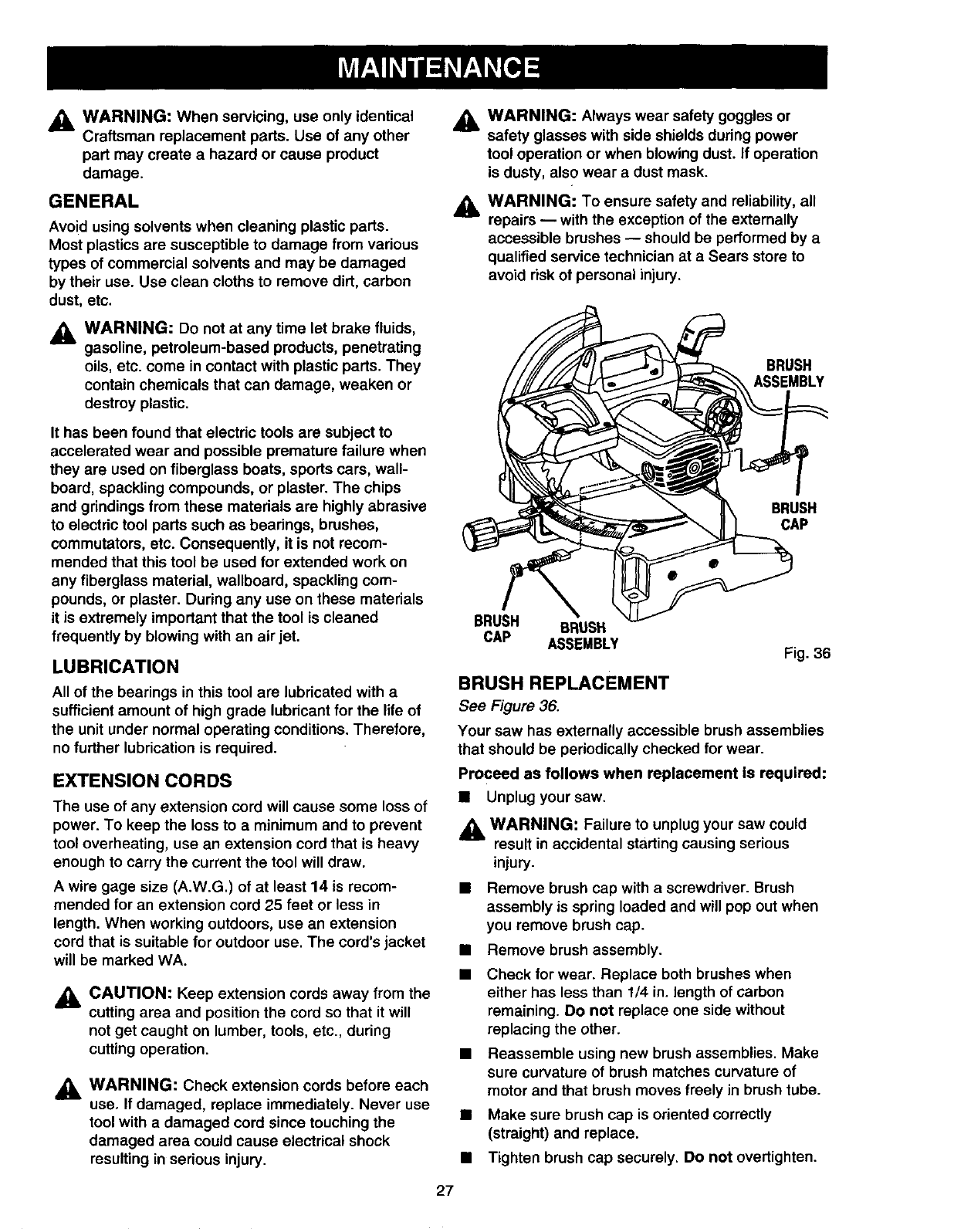
WARNING:Whenservicing,useonlyidentical
Craftsmanreplacementpads.Useofanyother
partmay create a hazard or cause product
damage.
GENERAL
Avoid using solvents when cleaning plastic parts.
Most plastics are susceptible to damage from various
types of commercial solvents and may be damaged
by their use. Use clean cloths to remove dirt, carbon
dust, etc.
_1= WARNING: Do not at any time let brake fluids,
gasoline, petroleum-based products, penetrating
oils, etc. come in contact with plastic parts. They
contain chemicals that can damage, weaken or
destroy plastic.
It has been found that electric tools are subject to
accelerated wear and possible premature failure when
they are used on fiberglass boats, sports cars, wall-
board, spackling compounds, or plaster. The chips
and grindings from these materials are highly abrasive
to electric tool parts such as bearings, brushes,
commutators, etc. Consequently, it is not recom-
mended that this tool be used for extended work on
any fiberglass material, wallboard, spackling com-
pounds, or plaster. During any use on these materials
it is extremely important that the tool is cleaned
frequently by blowing with an air jet.
LUBRICATION
All of the bearings in this tool are lubricated with a
sufficient amount of high grade lubricant for the life of
the unit under normal operating conditions. Therefore,
no further lubrication is required.
EXTENSION CORDS
The use of any extension cord will cause some loss of
power. To keep the loss to a minimum and to prevent
tool overheating, use an extension cord that is heavy
enough to carry the current the tool will draw.
A wire gage size (A.W.G.) of at least 14 is recom-
mended for an extension cord 25 feet or less in
length. When working outdoors, use an extension
cord that is suitable for outdoor use. The cord's jacket
will be marked WA.
_i, CAUTION: Keep extension cords away from the
cutting area and position the cord so that it will
not get caught on lumber, tools, etc., during
cutting operation.
,_ WARNING: Check extension cords before each
use. If damaged, replace immediately. Never use
tool with a damaged cord since touching the
damaged area could cause electrical shock
resulting in serious injury.
A
WARNING: Always wear safety goggles or
safety glasses with side shields during power
tool operation or when blowing dust. If operation
is dusty, also wear a dust mask.
_k WARNING: To ensure safety and reliability, all
repairs -- with the exception of the externally
accessible brushes -- should be performed by a
qualified service technician at a Sears store to
avoid risk of personal injury.
BRUSH
ASSEMBLY
BRUSH
CAP
BRUSH BRUSH
CAP ASSEMBLY
Fig. 36
BRUSH REPLACEMENT
See Figure 36.
Your saw has externally accessible brush assemblies
that should be periodically checked for wear.
Proceed as follows when replacement Is required:
• Unplug your saw.
_i, WARNING: Failure to unplug your saw could
result in accidental starting causing serious
injury.
• Remove brush cap with a screwdriver. Brush
assembly is spring loaded and will pop out when
you remove brush cap.
• Remove brush assembly.
• Check for wear. Replace both brushes when
either has less than 1/4 in. length of carbon
remaining. Do not replace one side without
replacing the other.
• Reassemble using new brush assemblies. Make
sure curvature of brush matches curvature of
motor and that brush moves freely in brush tube.
• Make sure brush cap is oriented correctly
(straight) and replace.
• Tighten brush cap securely. Do not overtighten.
27



